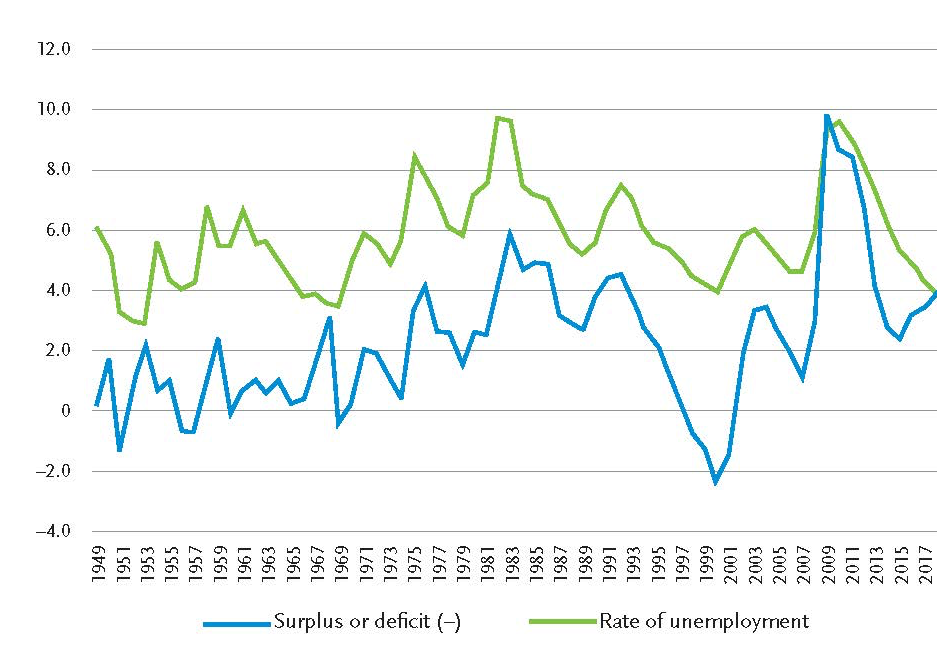The U.S. Department of Treasury confirmed on Friday that the federal deficit hit $984 billion in the 2019 fiscal year, as the nation is on the cusp of returning to the trillion-dollar deficits experienced during the Obama era. But what’s especially frightening is that this is happening when the unemployment rate is at a 50-year low of 3.5%.
In my new book, Fear Your Future: How the Deck Is Stacked Against Millennials and Why Socialism Would Make It Worse, I write extensively about why the unprecedented federal debt being placed on younger Americans poses such a threat to their futures.
One of the important points can be seen in this chart from the book, which shows that going back to 1949, there has been a strong relationship between higher deficits and higher unemployment. It makes sense. Generally, when more people are working, it means more people are paying taxes and, fewer are dependent on government benefits. The opposite is typically the case in a weaker job market. But in the past few years, we’ve seen a break from this trend, as unemployment has been plummeting, but deficits as a percentage of gross domestic product have been increasing.

The reasons for the rising deficits in a time of prosperity are multifaceted. The shorter-term reason is that during the Trump presidency, Republicans have cut taxes without offsetting spending cuts while blowing past the limits put in place by the debt ceiling deal of 2011 so they could boost military spending.
But the broader reason is that even before these changes, deficits were on track to grow due to the unsustainable growth in federal entitlement programs which neither party has wanted to do anything about.
If deficits are this bad now, just wait until the economy inevitably cools off at some point, and the unemployment rate starts creeping up again, draining the government of tax revenue and increasing dependency on the federal safety net.

